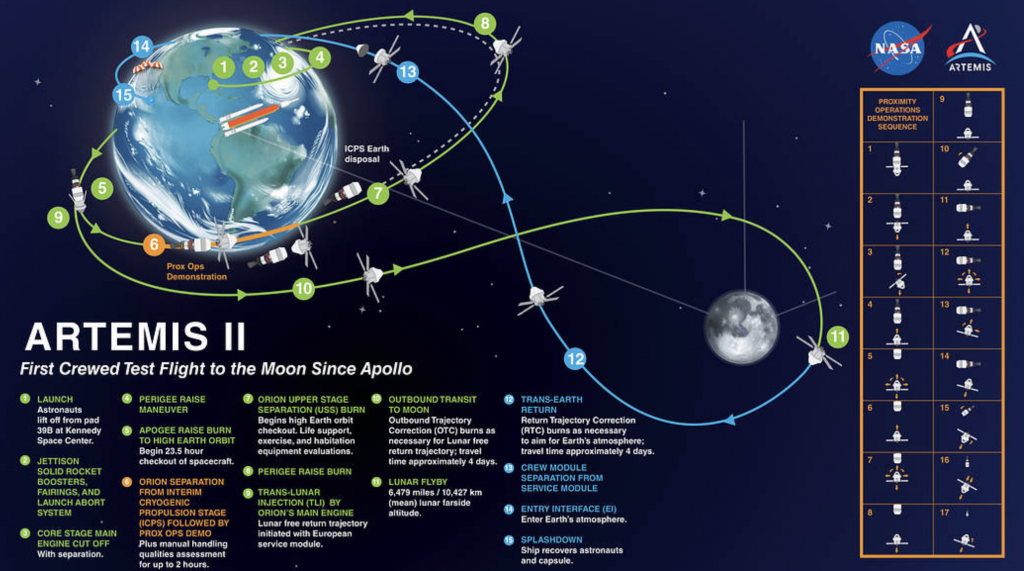Overview
The Artemis II mission, named after the twin sister of Apollo in Greek mythology, is an important step in NASA’s plan to return humans to the Moon and pave the way for future exploration of Mars and beyond. It will also be crewed by four astronauts including the first woman, Christina Koch and the first person for color, Victor J. Clover, to go to the moon. Astronauts will embark on their first journey aboard the Space Launch System (SLS) rocket and Orion spacecraft to venture around the Moon. The primary objective of Artemis 2 is to gather crucial data on the performance of the Orion spacecraft and the crew, assessing the program’s readiness to send humans to the lunar surface.
The mission, which is scheduled to launch in November 2024, will rely on the powerful Space Launch System (SLS) mega-rocket and the Orion spacecraft to launch the crew for the lunar flyby. Throughout the approximately 10-day-long mission, the astronauts and mission controllers will carefully observe and analyze the data gathered during the flight. This evaluation will provide valuable insights into Orion’s capabilities and the crew’s performance, enabling NASA to ascertain the program’s preparedness for future lunar missions.
Key facts
- Artemis 2 will venture the furthest from Earth since the Apollo 13 mission in 1970, reaching a maximum altitude of approximately 5,523 miles (8,889 km) above the Moon’s surface.
- The mission trajectory will follow a “hybrid free return” orbit, where Orion will orbit Earth twice to gain speed before performing a trans-lunar injection.
- It will swing around the Moon on a “free-return trajectory,” allowing for a direct return to Earth.
- Upon completion of the mission, as the spacecraft approaches Earth, the crew module will separate from the European Service Module and the crew module adapter. This separation will facilitate a splashdown in the Pacific Ocean, marking the successful conclusion of Artemis 2.
Possible future
Following the completion of Artemis 2, extensive data analysis by investigators will take place, with this process expected to span several months. The subsequent mission in the pipeline is Artemis 3, which aims to achieve a historic landing on the lunar surface in 2025, assuming all goes according to plan.
Even through doubts, If Artemis 3 manages to achieve its goal of landing humans on the moon’s surface in 2025, it will mark a significant milestone as the first such mission since NASA’s Apollo 17 in 1972. The success of this mission would be a testament to NASA’s commitment to lunar exploration and pave the way for future endeavors in space exploration.

